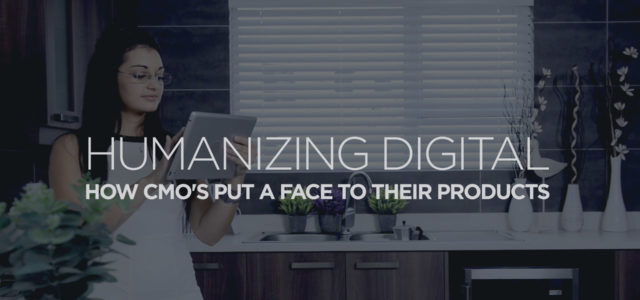This is a call for every executive, every board member, every consultant, and all change agents, to prioritize the full understanding of market evolution and evolving customer and employee behaviours and contrast and compare it to current digital transformation and innovation roadmaps.
I can assure you, there are gaps. And those gaps, signify real-time exposure to disruption. The bigger the gap, the bigger the threat.
Today, too many organizations and business leaders are mired in operational models that have them making investments and decisions on a quarter-to-quarter basis. Their view and vision can never extend beyond what’s directly ahead. This is short-termism and it hinders foresight, real-time periphery views and significant advancement. Short-termism also prevents market changing risk taking. It positions innovation as a cost center. It prioritizes immediate shareholder and stakeholder return over greater future returns. It protects the status quo and promotes conventional thinking and complacency.
This is not a time for short-termism however. Disruption is an everyday threat.
Leadership, especially boards of directors and shareholders, must now foster support and investment in immediate and longer-term transformation and innovation strategies, encourage more agile and dynamic leadership and organizational models and design empowering, safe and collaborative cultures. Even though these investments impact short-term results, it is the only way to future proof the organization while positioning it for greater yields over time.
My friend Raj Singh the Chair of the Institute of Directors (IoD) in the UK. IoD has over 30,000 directors as members serving as board members for listed and unlisted companies. For one of its quarterly breakfast club meetings, I was asked to share my views on the role boards of directors need to play in guiding digital transformation and business innovation. Raj also asked for me to discuss the role of customer experience as a catalyst for change.
I wanted to share it with you here…
TRANSCRIPT
Brian Solis [00:00:02] Hello, my name is Brian Solis, an author and digital anthropologist. We can talk about that one later. It’s a privilege for me to be able to speak to you virtually.
I think you all play a very important role to the future of business. My friend Raj asked me to virtually stop by, say good morning and share with you some of my thoughts.
One of the things that I think quite a bit about in half in the last way too many years is this concept of “experience architecture”. I wrote a book recently, actually wrote two books that were sort of brother and sister. One was called “What’s the Future of Business?” I named it that so that I could specifically use the acronym WTF and its companion was the follow on book called “X – the Experience When Business Meets Design“. The premise of those books is actually I think why you’re gathered in Cliveden today for your breakfast meeting.
And to be honest, I wish I was there in person. Experience is actually what life is about, and experience is something that although it’s a term widely used in business, just like customer-centricity or customer relationships or customer relationship management or customer experience management, the thing about it that we’ve been missing all of these years is the humanity of it all.
And as a digital anthropologist, I like to joke with the play on words and say, “oh, the humanities of it all”, because really at the end of the day, what we’re missing is social science. We’re missing the psychology, the neuroscience, the emotions of what it means to be human and what it means to have an experience.
See, the thing about experiences that we all have them. And when we talk about it at work, we talk about it as a strategy. When we talk about it to any companies we may adviser or speaking amongst ourselves here this morning, we miss the human being of it, and we often mistake ourselves for the customer we’re trying to reach.
Customer experience is not just a strategy. It isn’t just about technology. Customer experience and the word experience is an emotion. We feel it. It’s a human reaction, it’s an emotional reaction to any moment. So you think about the moments of truth, it’s why Net Promoter Score, for example, is not necessarily the most accurate metric, because we’re just sort of capturing an instant. Whereas an experience is not just one instance it’s all of the instances combined. It’s how all of those emotions stitched together to sort of leave you with a memory. Was that experience good? Was it experience bad? And customer experience is the way I define it is the sum of all experiences a customer has with you throughout the entire journey, throughout the lifecycle.
In fact, it’s not just about any one moment, it’s about how all those moments come together. And so I like to spin or shift the perspective to the customers’ experience, adding an apostrophe s, so that we can see it from their experience, the experience that they feel because all experience has come down to emotions. It’s a great emotion and you talk about it. It’s a bad emotion, a negative experience, and you talk about it. Either way, both form a memory and that memory becomes brand.
In fact, I often say that in today’s connected society, one where people are proactively seeking the shared experiences of others in order to help them make a decision, those shared experiences, the experiences that people have and the experiences that people share, become your brand. And that is the result of the customer’s experience in aggregate. The Internet has a long memory. Anything between a great experience and a bad experience is irrelevant. It’s forgetful. That’s the point.
So here’s why it’s important. Today we live in an era of digital Darwinism where technology and society evolve. What’s not evolving fast enough are business models, perspectives, operational models, mindsets. The understanding of who the customer is becoming, not how we project ourselves in our experience and our legacy perspectives onto what we think is happening. And this is why this time is so important for the role you play in any organisation you’re connected with.
See, digital transformation is one of the biggest trends and so is corporate innovation. But the thing that is often missing again is what does it mean to be human? How can we give technology a purpose? How can we give our CX strategies a purpose? How can we understand who people are, who they’re becoming? What are their preferences?
I often call today’s customer an accidental narcissist, because with their device they can pretty much order anything. Whatever it is in Uber, they can order their lunch. They can order – I have gasoline delivery to my home through an app. We’re trained to realise that we can get what we want, when we want, how we want.
So I guess that’s what this comes down to, is that to be customer-centric actually means to be customer empathetic. And to be customer empathetic that means that we’ve got to look at data holistically. That means we have to apply AI machine learning.
We have to get rid of our cognitive biases to be able to see how people are different, how they’re different from us, how they’re different from the models that we have in place, how their journey completely breaks to the linear model that we have for them, no matter how much we bolt on to that journey, whether it’s mobile or social or what have you. It all still sucks. I mean, honestly, it does.
If you compare the Uber experience or the AirBnB experience or whatever your favourite brand is today in terms of something that’s fast and convenient and intuitive and on-demand and mobile. I mean, those are all the standards, right? Everybody competes against some standards. We just don’t realise it yet.
We have yet to update our models to compete against that because our models are still rooted in what I call “iteration”, where we’re using technology to sort of incrementally improve. Whereas innovation on all of these sides is about creating new value and changing the game, changing customer behaviours, changing customer preferences and mindsets and expectations.
So the role we have to play is not looking at all of this stuff, this innovations, technology, these possibilities, this new expertise we need to hire for, as cost centres. We have to see them as investments in the future, just like we would look at any start-up to see what are we investing in or what’s that ROI going to give us now, 10 years from now, 20 years from now, whatever it is?
Because that’s what it means to think and act like a start-up. New mindsets, new perspectives, new formulas, new models, new ways of attacking not just the problem, but also all of the new opportunities that are before us.
See, when we talk about customer relationship management and we talk about customer-centricity, what we’re really talking about is how can we incrementally use technology to automate or improve or scale all of the things that we have so we can deliver greater shareholder value next quarter. Minimize costs, maximize opportunities. Nothing wrong with that. Trust me. Got nothing against money.
But what I do have a problem with is what I call “short-termism”, which is not looking at the long term game and also the long term results in returns that happen because we can think and care about the way people are going to react to that experience. Right now, those experiences are left to chance.
People already say they will pay as much more as 25 per cent, in order to get a great experience, imagine what happens if we designed that experience realistically, if it was much more on demand, if it was much more intuitive, much more innovative than just stacking and building upon what we have today. Because what we have today, this hybrid of thinking about the future, but it’s bolted on the things of the past. This is your opportunity to be inspired and inspire.
I mean, the soul of my work is constantly thinking about how to not just be better than everybody else but to be the best and everybody wants to follow and emulate, while I’m constantly looking at the future, but connecting the dots to what is now. Sometimes I think about the idea of it’s not just about what we need to do, it’s also what not to do.
And I’ll tell you right now, what’s not to do is ignore all of the little things that are broken and then also all of the things that are new. Not just new to you, but just new. And I’ll leave you with this.
There are three different types of ways to move forward, and I think balance is actually all three. You have to acknowledge that we need to do all three and I understand the differences between them. One is iteration. In fact, most companies that I look at today confuse iteration with innovation. Iteration is doing the same things but better.
Think about automation. Think about scale. Think about how A.I. and bots, for example, are being used today. They’re using customer service and customer support to sort of improve and augment that human engagement. It’s essentially just sort of scaling what we have today and giving maybe better experiences along the way. It’s good but that’s iteration.
Innovation is introducing new value. So imagine if AI machine learning was able to anticipate based on past behaviours and current personalisation models, what’s going to happen next in order to proactively engage that customer before that negative experience happens?
So you combine iteration with innovation and then you get disruption, which is doing new things that make the old things obsolete. And that’s why there’s so much disruption for old today, because we’re sort of missing this opportunity between the experience people want, the experiences we deliver, and that creates this experience divide between the two. Call it the epidemic of “out-of-touchness”.
We have to build bridges to this side of experiences that we don’t deliver today because that other side isn’t going to build bridges to us. And if they do today, it’s finite. That’s where you come in. And that’s why I wanted to share this video with Raj and all of you because as the Institute of Directors, your role is to direct a future of business. And the future of business, as it is right now, is largely rooted in business as usual with some semblances of innovation. But it’s actually iteration.
Hopefully today, you leave becoming part of that movement that’s going to transform businesses into not only something that’s relevant, but something that’s meaningful and using technology with a purpose and rethinking what those models are and what those investments are in order to allow them to give them that permission, give them that space, to give them that freedom, to allow for true leadership, not just management based on old models and infrastructures, but leadership to architect the experiential foundations that usher in the next generation of business.
Again, I wish I was there. Maybe Raj can share with you some of my latest work, especially on my new book, “Life Scale”, which is looking at us and technology and how it’s disrupting us as individuals, both in our personal lives but also in our work lives.
In fact, productivity is about to hit a wall and it’s already starting to smack it quite a bit where digital distractions are having a pretty dramatic impact on our productivity, our creativity and our workflow. And in an era of machine learning and AI, we can’t afford to lose our jobs and we can’t just simply be retrained.
It’s a really important time to re-imagine the importance of creativity in our work and sort of break that traditional linear thinking because one of the pillars of innovation is creativity. So with that, I will leave you to your duties and I just wanted to thank you for allowing me to virtually participate in your meeting today and together we will define not just the future, but a better future, more meaningful feature, a more significant future that people will look at and say, “wow”.
This is the time where business was reinvented not just as another industrial revolution. That’s something that actually took humanity into account, to do something better and more significant that brought us all together with that sense of purpose wasn’t just about buying and selling or transactions or simply the size or the margins of anything. It was what we did to build a better community, a better market, where everybody had the types of experiences that not only they were willing to pay for, but they were willing to share. Thank you very much.
Republished with permission. Original posting here
Article by channel:
Everything you need to know about Digital Transformation
The best articles, news and events direct to your inbox
Read more articles tagged: Customer Centricity, Customer Experience, Customer Journey, Featured






